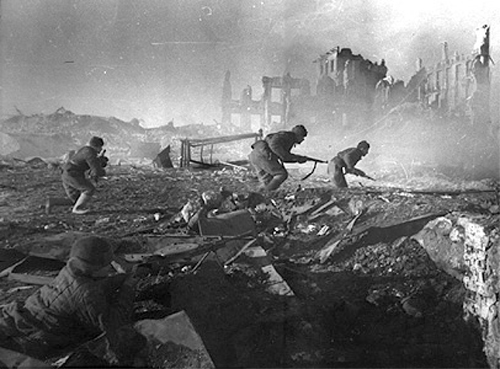Modern Russia
Selected Articles and Publications

A selection of useful articles on modern Russia and the USSR:
1. Alexander II: Emancipation and Reform in Russia 1855-1881
The ‘great reforms' of Tsar Alexander II (1855-81) are generally recognised as the most significant events in modern Russian history between the reign of Peter the Great and the revolutions of 1905 and 1917. The most important of Alexander's reforms, the emancipation of he serfs in 1861, has been described as ‘probably the greatest single piece of state-directed social engineering in modern European history prior to the twentieth century.
2. The Russian Constitutional Monarchy, 1907-17
The defeat of the revolution of 1905 afforded the absolutist Tsarist monarchy an opportunity to reform the administration and to seek a new basis of support in place of the declining gentry class. Historians have been divided ever since over the constitutional system's chances of success.
Had Tsardom advanced far along the path of Westernisation before 1914? Was the Great War the major cause of the Fevruary Revolution? Or was a new revolution in the process of gestation in the period 1912-1914? This pamphlet seeks to re-evaluate the constitutional monarchy in the light of recent research.
3. Between the Revolutions: Russia 1905 to 1917
"The key question is this - is the peaceful renovation of the country possible? Or is it possible only by internal revolution?"
This quotation succintly expresses the problem that faced both contemporaries and subsequant generations of historians confronting the development of Russia between the revolutions of 1905 and 1917. The upheavals of 1905 and 1906 ostensibly transformed Russia from an absolutist to a constitutional...
4. Stalin 1928-1941: Listen to the podcast of Dr Jane McDermid's lecture on Stalin
On 15th November Dr Jane McDermid gave the first lecture in the HA's Sixth Form Lecture Series on the making of the Stalinist State at the National Archives, Kew. Click on the following links below to listen to her lecture and read the lecture notes.
Stalin Lecture Podcast Part 1
Stalin Lecture Podcast Part 2
5. Stalin, Propaganda, and Soviet Society during the Great Terror
Sarah Davies explores the evidence that even in the most repressive phases of Stalin's rule, there existed a flourishing ‘shadow culture', a lively and efficient unofficial network of information and ideas. 'Today a man only talks freely with his wife - at night, with the blankets pulled over his head.' This remark, allegedly made by the Russian writer, Isaac Babel, is often cited as ‘evidence' of the climate of fear which prevailed the Soviet Union at the height of Stalin's ‘Great Terror'. The terror swept through Soviet society in the second half of the 1930s, reaching a peak in 1937-38. Communist Party members, generals, writers, academics, engineers, ordinary workers and peasants were arrested as ‘enemies of the people' on any pretext, and shot or sent to the Gulag. Despite the revelations from the former Soviet Union, there is still no consensus about the number of victims of the terror: figures range from tens of millions to several hundred thousand.
6. Czech Uranium and Stalin's Bomb
Z.A.B. Zeman uncovers a fateful link between Czechoslovakia's brief monopoly of uranium in Europe and the country's subordination to the USSR. The great uranium rush started in 1943 and lasted for about seven years. Unlike the gold rushes of the past, uranium did not promise untold riches to individuals but instead unlimited power to the state: the atom bomb was the ‘absolute weapon'. As long as physicists and deposit geologists assumed that uranium was a scarce raw material, therefore, the great powers were desperate to secure it.
7. Nazism and Stalinism: A suitable case for comparison?
Is it legitimate to compare the Nazi and Stalinist regimes? There might seem little room for doubt. It is often taken as self-evident that the two regimes were variations of a common type. They are bracketed together in school and university courses, as well as text books, under labels such as 'The Age of Totalitarianism' and 'Europe of the Dictators'....
8. Russian Revolution: Social Movements between the Revolutions Feb-Oct 1917
On the 29th November Dr Jane McDermid gave the second of her lectures on the Russian Revolution, at the Weston Theatre, Manchester. John Laver, Principal Examiner in History at AQA also gave some invaluable advice on how to answer A Level History Exam questions.
9. After the Uprising of 1956: Hungarian Students in Britain
Much has been written during the last 50 years about the events leading up to and during the Hungarian Uprising of 1956. Less consideration has been given to the students who arrived in Britain as refugees. During the weeks following the Soviet intervention in Hungary around 25,000 people were killed and a further 2,000 executed. From the beginning of November 1956 thousands of Hungarian citizens were rounded up and deported to Russia for no other reason than that they were in the wrong place at the wrong time. Some fearing for their lives but many using the opportunity to escape from an oppressive regime, around 200,000 Hungarians took the opportunity to flee the country. The majority crossed the border into Hungary's only neighbouring non-communist state, Austria. Among them were many students. The students in Hungary had been closely involved in the uprising. Many feared reprisals and felt themselves vulnerable if they should remain in Hungary. The students at British universities were quick to lend support to their Hungarian counterparts. At first the...

